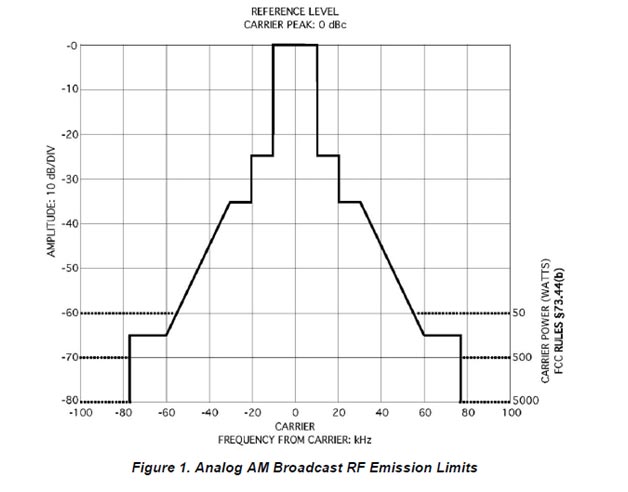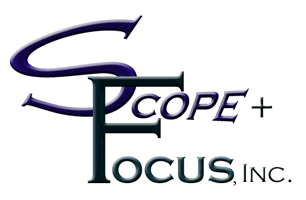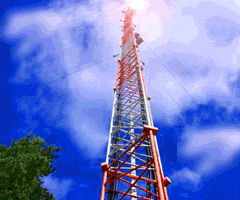|
|
AM NRSC Tests and Measurements
Subtitle: The AA – (Annual Albatross)
AM station owners wince when you talk about NRSC measurements and the mask. They often don’t understand it and many of them feel like it’s a useless regulation.
If you take one step back, understanding it is easy…as is compliance. Here’s a non-technical explanation. The tech details are spelled out here.
What is it? Section 73.44 of the commission’s rules (see below) specifies that measurements must be made once a year – at intervals no longer than 14 months. These measurements document what part of the radio spectrum the station is actually using.
Why? Because of the crowding of the AM band, it is easy for a station operating on, say 750kHz to interfere with stations on 730kHz and 770kHz…and, with malfunctioning or grossly misadjusted equipment, even 720kHz and 780kHz. In fact, under certain poor conditions, the station could interfere with stations anywhere on the band or even outside the band, especially on harmonics (multiples) of the assigned frequency. Yes, 750kHz could easily interfere with a 1500kHz station.
So we take measurements to prove at the time and place of the measurements that the station is compliant with the rules limiting the amount of radiation it emits outside its assigned frequency.
It’s called NRSC because the National Radio Systems Committee agreed almost 20 years ago to reduce the bandwidth of each station in order to reduce interference. It meant an agreement to limit high frequencies from being transmitted. In general, frequencies over 10,000Hz are removed from the audio before being sent to the transmitter.
At the same time, because of receiver inadequacies and increases in natural and man-made noise, frequencies between 400Hz and 10,000Hz were boosted – 1000Hz a little; 10,000Hz much more. In many cases this actually restored the normal balance to receivers, especially auto receivers. In some high end receivers, the noise is actually reduced.
To determine compliance, the NRSC, in association with the commission, created the NRSC “mask”. You can view it below. This is simply an overlay that is used to determine if the transmission system is in compliance with emission standards.
The easiest way to use this is to go into the field with a spectrum analyzer, find a place about a kilometer away (in a lobe, not a null, if it’s a directional station), set up and use the analyzer to observe – storing the signal. The station should be operating normally, on its main transmitter, and with no deviation from the daily transmission path. That is, no fair pulling equipment off line during the test.
After observing the area within the mask, the rest of the band is examined to determine if there any spurious emissions which are caused by the transmitter being measured.
Finally, harmonics are measured to ensure that the rules for harmonic content are met.
Afterward, the results are tabulated and entered into a report that is kept on file at the station for two years. That means you should always have two on file. BTW – when the tests are performed, always have whomever performs them sign a page that states they were done and are being documented.
If you’re interested in the in-depth technical, you can start here. In addition, 73.44 is duplicated below. You can check here to make sure you have the most current information.
And here are a few technical tips:
- Make sure you’re in a lobe but also check to see what reflections may be giving false readings e.g., don’t expect accurate measurements standing next to a water tower
- Use a vertical antenna, if possible. But remember, if you use a tuned antenna, you can wind up with false readings
- Check the input level to the spectrum analyzer. You can chase false gremlins forever and an overloaded front end will give you plenty of those gremlins. So will case leakage. Most analyzers which meet the requirements for measuring AM will have sufficient shielding. However, if you get readings that are different inside your vehicle from those outside (with the antenna in the same place) you may have a leakage problem
- If you have erratic or out-of-tolerance readings, move. It’s not only water towers that can influence results. Even a rusty downspout can re-radiate.
- If you have a problem with modulation-related results, log it then do a temporary fix – a low pass filter on the audio, reduction in modulation level, whatever it takes to ensure you’re not interfering with others. If it’s harmonic related, a temporary series or parallel filter may help while the transmitter is being analyzed. Many times the consultant can design the matching network so that the shunt leg is resonant at the second or third harmonic, reducing emission.
§ 73.44 AM transmission system emission limitations.
(a) The emissions of stations in the AM service shall be attenuated in accordance with the requirements specified in paragraph (b) of this section. Emissions shall be measured using a properly operated and suitable swept-frequency RF spectrum analyzer using a peak hold duration of 10 minutes, no video filtering, and a 300 Hz resolution bandwidth, except that a wider resolution bandwidth may be employed above 11.5 kHz to detect transient emissions. Alternatively, other specialized receivers or monitors with appropriate characteristics may be used to determine compliance with the provisions of this section, provided that any disputes over measurement accuracy are resolved in favor of measurements obtained by using a calibrated spectrum analyzer adjusted as set forth above.
(b) Emissions 10.2 kHz to 20 kHz removed from the carrier must be attenuated at least 25 dB below the unmodulated carrier level, emissions 20 kHz to 30 kHz removed from the carrier must be attenuated at least 35 dB below the unmodulated carrier level, emissions 30 kHz to 60 kHz removed from the carrier must be attenuated at least [5 + 1 dB/kHz] below the unmodulated carrier level, and emissions between 60 kHz and 75 kHz of the carrier frequency must be attenuated at least 65 dB below the unmodulated carrier level. Emissions removed by more than 75 kHz must be attenuated at least 43 + 10 Log (Power in watts) or 80 dB below the unmodulated carrier level, whichever is the lesser attenuation, except for transmitters having power less than 158 watts, where the attenuation must be at least 65 dB below carrier level.
(c) Should harmful interference be caused to the reception of other broadcast or non-broadcast stations by out of band emissions, the licensee may be directed to achieve a greater degree of attentuation than specified in paragraphs (a) and (b) of this section.
(d) Measurements to determine compliance with this section for transmitter type acceptance are to be made using signals sampled at the output terminals of the transmitter when operating into an artificial antenna of substantially zero reactance. Measurements made of the emissions of an operating station are to be made at ground level approximately 1 kilometer from the center of the antenna system. When a directional antenna is used, the carrier frequency reference field strength to be used in order of preference shall be:
(1) The measure non-directional field strength.
(2) The RMS field strength determined from the measured directional radiation pattern.
(3) The calculated expected field strength that would be radiated by a non-directional antenna at the station authorized power.
(e) Licensees of stations complying with the ANSI/EIA-549-1988, NRSC-1 AM Preemphasis/Deemphasis and Broadcast Transmission Bandwidth Specifications (NRSC-1), prior to June 30, 1990 or from the original commencement of operation will, until June 30, 1994, be considered to comply with paragraphs (a) and (b) of this section, absent any reason for the Commission to believe otherwise. Such stations are waived from having to make the periodic measurements required in § 73.1590(a)(6) until June 30, 1994. However, licensees must make measurements to determine compliance with paragraphs (a) and (b) of this section upon receipt of an Official Notice of Violation or a Notice of Apparent Liability alleging noncompliance with those provisions, or upon specific request by the Commission.
[47 FR 8588, Mar. 1, 1982, as amended at 49 FR 3999, Feb. 1, 1984]
__________________________________________________________________________
NRSC Mask: Here’s the actual NRSC Mask

|
|





